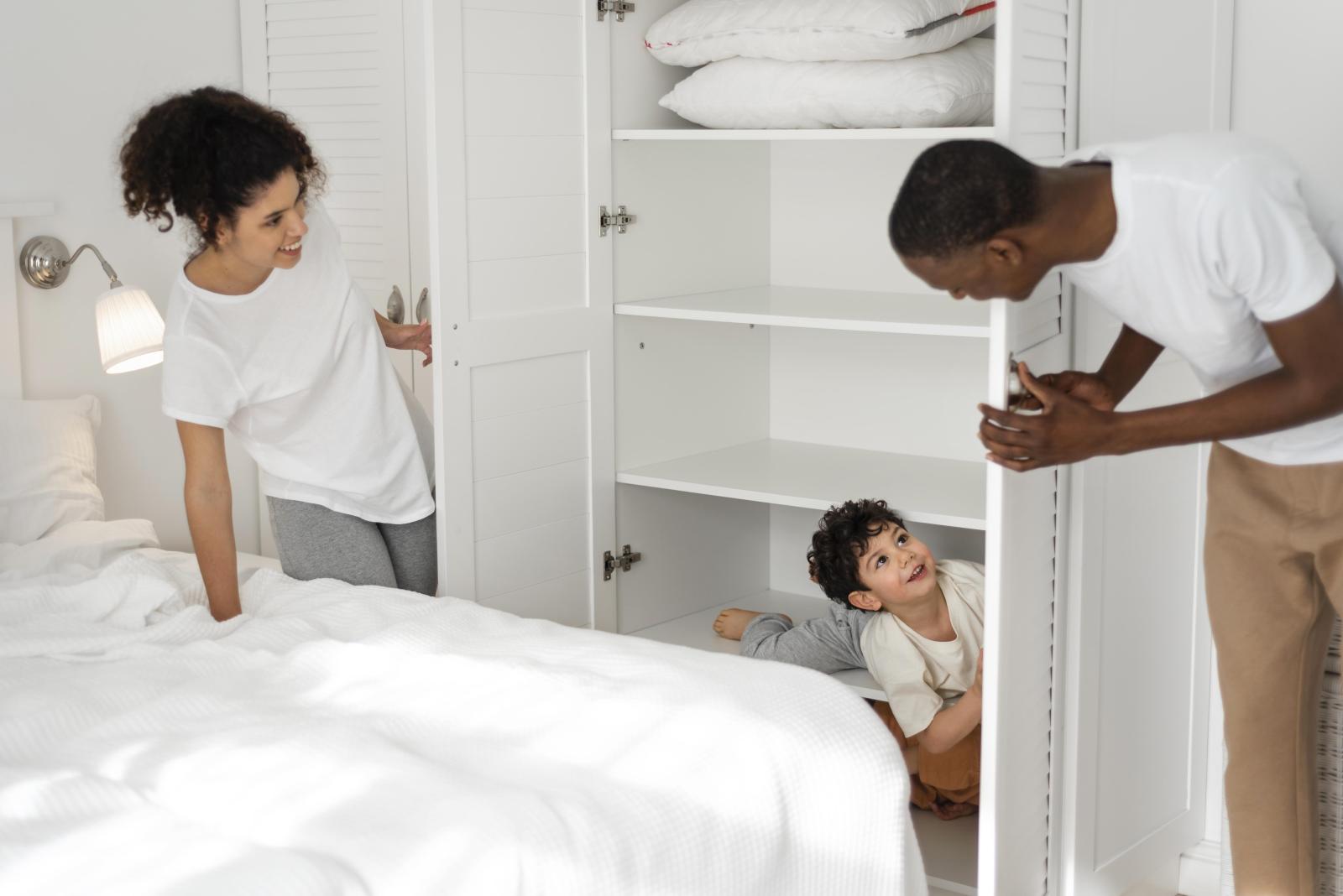Notifications

8 minutes, 17 seconds
-273 Views 0 Comments 0 Likes 0 Reviews

When designing a compact bedroom, every inch of space counts—and your wardrobe can either enhance or hinder the flow, function, and feel of the room. While style is important, practicality and spatial awareness are key when selecting a wardrobe for a small space.
In this blog, we’ll cover the most common wardrobe design mistakes to avoid in compact bedrooms and offer practical tips to help you make smart, space-saving choices. Whether you're renovating or starting fresh, this guide will help you pick a wardrobe design that works with your room, not against it.
One of the biggest mistakes homeowners make is opting for a wardrobe that’s too large or bulky for the bedroom. It might offer tons of storage, but it can dominate the room, making it feel cramped and uninviting.
Choose a sleek, compact wardrobe that aligns with your room’s scale.
Consider modular or built-in wardrobes that are tailored to fit perfectly.
Use lighter colors and reflective finishes to keep the space visually light.
Many people pick a wardrobe based on looks without evaluating how much storage they need. This leads to frustration when clothes, accessories, or shoes don’t fit—or worse, overflow into other parts of the room.
Take inventory of your clothes, accessories, bags, and seasonal items.
Ensure the wardrobe has a mix of shelves, drawers, and hanging space.
Plan for internal organizers like pull-out trays, racks, and baskets.
In small bedrooms, floor space is limited, but vertical space often goes underutilized. Leaving a gap between the wardrobe and the ceiling is a missed opportunity.
Extend the wardrobe from the floor to the ceiling.
Use overhead lofts or wall-mounted cabinets to store off-season items.
Install open vertical shelves for books, décor, or baskets.
The durability and look of your wardrobe depend heavily on the material you choose. A common oversight is selecting wardrobe materials that aren’t suitable for long-term use in bedroom environments.
Opt for block board over plywood—it’s stronger, less prone to warping, and more stable for larger panels.
Ensure the shutters have laminate or acrylic finishes that are easy to clean.
Avoid particleboard or MDF in high-humidity areas, as they deteriorate faster.
Traditional hinged doors can eat up precious clearance space. In a compact bedroom, this type of door can bump into the bed or make access inconvenient.
Install sliding doors to eliminate the need for swing space.
Sliding doors also provide a cleaner, modern look and can be fitted with mirrors to reflect light and enlarge the visual space.
If sliding doors aren’t possible, bi-fold doors are a space-efficient alternative.
A compact bedroom can quickly feel claustrophobic if filled with too much furniture. A wardrobe should provide adequate storage, but not at the expense of open space.
Choose multi-functional furniture, like beds with drawers or wardrobes with integrated dressers.
Keep the room minimalist, focusing on essentials only.
Opt for floating shelves instead of bulky side tables or drawers.
Shoving all furniture against the walls might seem like a way to open up space, but it can sometimes have the opposite effect. Poor placement can make movement difficult and disturb the natural layout of the room.
Allow breathing room around the wardrobe and the bed.
If possible, move furniture slightly off the wall to create a sense of openness.
Use L-shaped layouts or wardrobes that tuck into corners to optimize the layout.
It’s not enough to just fit furniture in—you need to comfortably move around it. A tight squeeze between the bed and the wardrobe is not only annoying but also reduces the room’s functionality.
Maintain at least 24 to 30 inches of walking space between the wardrobe and any other furniture.
Open drawers or doors fully to ensure there’s no obstruction.
Consider wall-mounted or recessed wardrobes if floor space is extremely limited.
An enclosed wardrobe in a small bedroom can trap moisture, especially in humid climates, leading to odors or mold.
Ensure air vents or breathing gaps inside the wardrobe.
Leave a slight gap between the back of the wardrobe and the wall.
Use moisture absorbers or dehumidifier packs inside the wardrobe if required.
A poorly lit compact bedroom with a dark wardrobe can feel like a cave. Good lighting is essential not just for aesthetics, but also for usability, especially when choosing outfits or organizing items.
Use ambient lighting (ceiling lights), task lighting (bedside or wardrobe lights), and accent lighting (under-shelf LED strips).
Integrate wardrobe lighting, like motion-sensor LED lights inside shelves.
Use mirrored doors to reflect light and make the room feel more spacious.
You may think your current wardrobe is sufficient, but life evolves. Ignoring future needs can result in overcrowding or replacing furniture prematurely.
Choose modular wardrobes that can be expanded or adjusted later.
Design compartments to be flexible—e.g., adjustable shelves or removable racks.
Consider storage for additional items like winter wear, documents, or new additions to your wardrobe.
Choosing the right wardrobe for a compact bedroom is all about smart planning. Avoid bulky designs, use vertical space wisely, and opt for sliding or mirrored doors to keep things functional and airy.
Need help designing the perfect fit?
KreateCube connects you with trusted interior experts who can tailor wardrobe solutions for small spaces—beautiful, efficient, and built to last.

